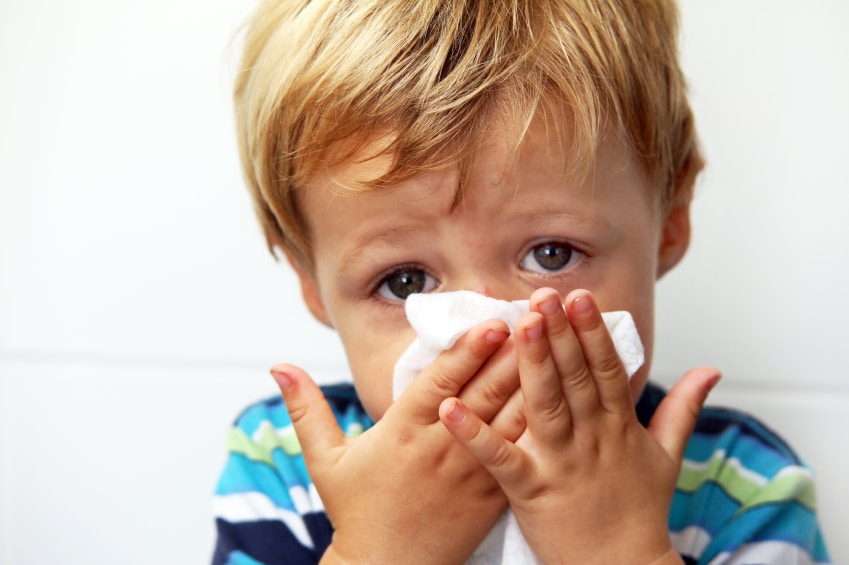A little over ten years ago, I was a nanny to a first-grade boy who had half a dozen life-threatening allergies. And even though a good chunk of time has passed since then, I still find myself having anxiety dreams about peanuts.
Now, keep in mind that I was an experienced nanny by the time that I’d been hired for that job. I’d already taken care of more than a dozen children, some of whom had severe special needs. But I have to say that nothing scared me quite as much as this child’s nut allergy — not to mention his allergies to eggs, wheat, green beans, kidney beans and pineapple, too. One wrong snack, and he could’ve ended up in the emergency room…or worse. But, with a little luck and a lot of vigilance, I managed to keep the kiddo safe for about a year as his full-time nanny, and then for several years more as a part-time nanny for the family.
This experience, in particular, taught me a lot about how to care for a child with severe allergies. As I went along, I developed a set of six rules for myself that I’ve followed ever since when caring for other children with allergies.
Here they are:
1) Ask Lots of Questions — and More Than Once
In an ideal world, parents would give their babysitters and nannies extremely clear and explicit instructions on how best to care for their child on Day 1. This would include comprehensive information about what their child is allergic to, what signs they should look for in case the child has a reaction and what they should do in case of an emergency.
Unfortunately, this doesn’t always happen in the real world. Parents are people, too, and they can forget important details about their child’s allergies that a child care provider should know right off the bat. So, help them out by being a proactive learner.
When I say “proactive learner,” I mainly mean that you need to ask lots of questions — and ask them more than once until you’ve committed every single detail to memory. When it comes to a child’s safety, there are no dumb questions — so don’t be afraid or shy.
You should always ask the parents to explain to you, in detail, what the child’s specific allergies are, what their reactions are and how to treat them. If the parents have told you that anaphylaxis is among their child’s possible allergic reactions, ask the parents to walk you through the child’s specific symptoms and treatments. (Some of the most common ones include itching, swelling, or problems breathing.) Also, make sure to ask them if their child’s allergies are severe enough to warrant carrying an EpiPen.
If something isn’t clear, ask follow-up questions so that you can get the full picture. If your employers aren’t sure where to start or what information to share, our “Allergies 101 for Your Sitter” article will help jog their brains.
Again, don’t be afraid to ask questions, even if you’ve already asked them before — it’s your job to know anything and everything about the child’s allergies.
2) Make a “Triggers List” for Each Allergy and Keep It With You
Many children with severe allergies have more than one trigger, so it’s crucial that you remember all of them. One easy way to do this is by making a list of every single one of those triggers, and keep it on you at all times.
These “Triggers Lists” are very helpful when it comes to food-related allergies (see my third rule below), but they can also be very helpful for non-food related allergies, too. For example, if the child is allergic to bees or ragweed, you may need to be more vigilant in parks or playgrounds.
Just remember: no matter where you go — whether it’s out to a museum or just to the backyard — you should always have this list with you if you’re with the child.
3) Check the Ingredients Labels on Every Single Food
If the child has food allergies, make sure that you review the ingredients labels of everything the child eats. Then, check them against your “Triggers List” — maybe even scan both twice to make sure that you didn’t accidentally miss something the first time.
If the food in question doesn’t have an ingredients label, don’t feed it to the child. It’s just not worth the risk.
[RELATED: “Food Allergies 101: A Guide for Parents and Caregivers“]
4) Learn How to Use an Epinephrine Shot (EpiPen) — and Bring It Everywhere
If you know that anaphylaxis is a possible reaction, the family should have an epinephrine shot — or “EpiPen” — on hand. There should be instructions included right on the EpiPen box; read them right away so that you can familiarize yourself with every step of the administration process. (You can also find EpiPen instructions here.)
However, knowing how to use an EpiPen is just half the battle; you also need to carry it with you. EVERYWHERE. Even if you’re amazing at administering an epinephrine shot, it won’t be any help if you don’t have it with you in an actual emergency.
So, start making a habit of keeping it on you at all times — and keep it close at hand. If you bring a bag to work, keep it in there. If you wear a jacket to work, keep it in a designated pocket — ideally, the jacket will have pockets that can be closed by a zipper or button. Wherever you decide to put it, make sure it’s safe and easily accessible. (Cars are okay, but consider that the further away you park, the longer it will take you to get to the EpiPen and then back to the child.) If you move the EpiPen from its designated spot, remember to put it back as soon as you can.
And yes, this also means circling back to get it even if you are halfway to a park or a playdate. It’s that important.
5) Eating Out? Be Resourceful and Extra Cautious
If you go out to eat with the child who has serious food allergies, chances are very good that you won’t be able to find any ingredients labels for your meals. That being said, you do have another great resource at your disposal: the restaurant waitstaff.
By and large, restaurants take food allergies very seriously, so don’t be afraid to let your server know about the child’s allergies. You can also have them double-check with the kitchen staff to make sure that the child’s meal doesn’t have any hidden trigger ingredients.
If you’re caring for children with nut allergies, just know that ice cream can be dangerous — especially if the server mixes the scooper with different flavors and toppings. Softserve is usually a safer bet.
If the child’s heading to a playdate, make sure you inform the parent, nanny or babysitter of their allergies (e.g., what they are and how to take care of them). It may even be best to talk to them about the child’s allergies in advance of the playdate. And don’t forget to hand them the EpiPen!
6) Know Your “Safe” Treats and Activities
Not getting to eat the same treats or do the same activities as the other kids can really wear on a child. That’s why, when babysitting children with allergies, it’s a great idea to keep a few snacks on hand that the kid can have, and have a few backup activities that you know he’ll enjoy doing.
For example, if the child can’t have ice cream with his friends, just remind him that he has his special popsicles at home.
If the child is allergic to pollen, go the extra mile for him by coming up with fun indoor activities that he can do during the high pollen seasons.






